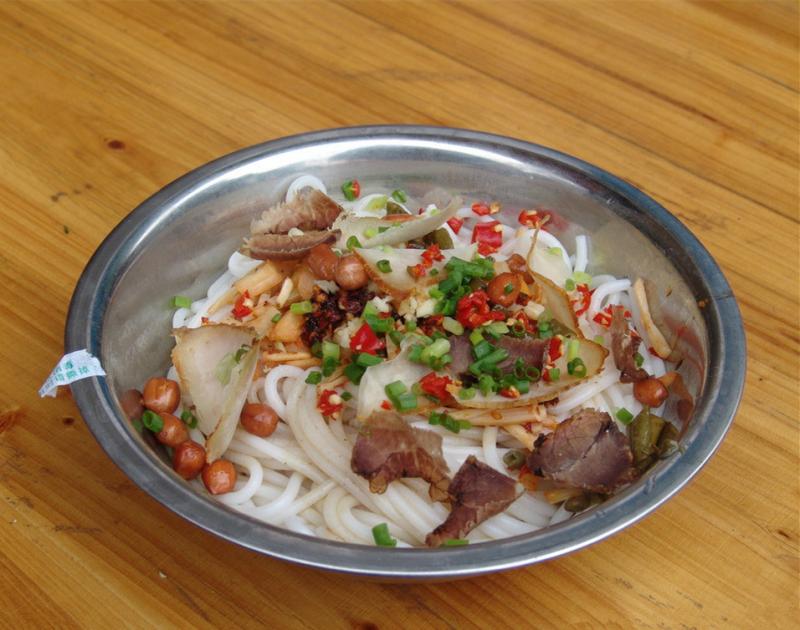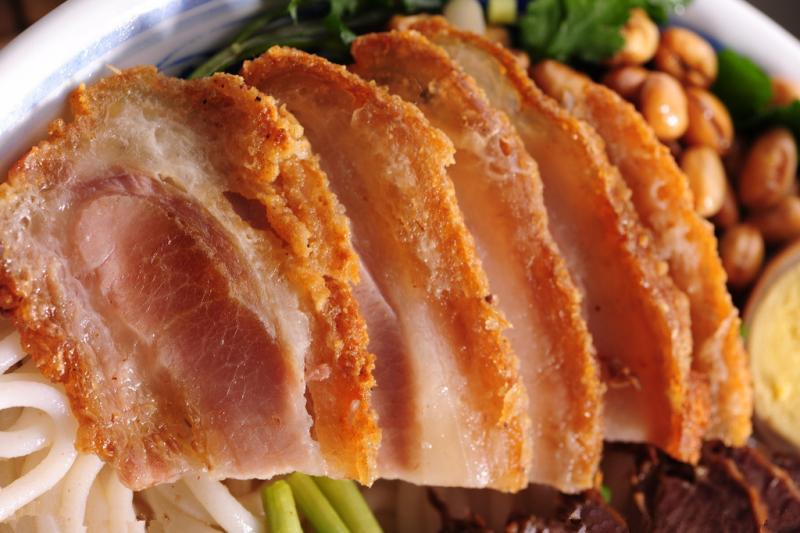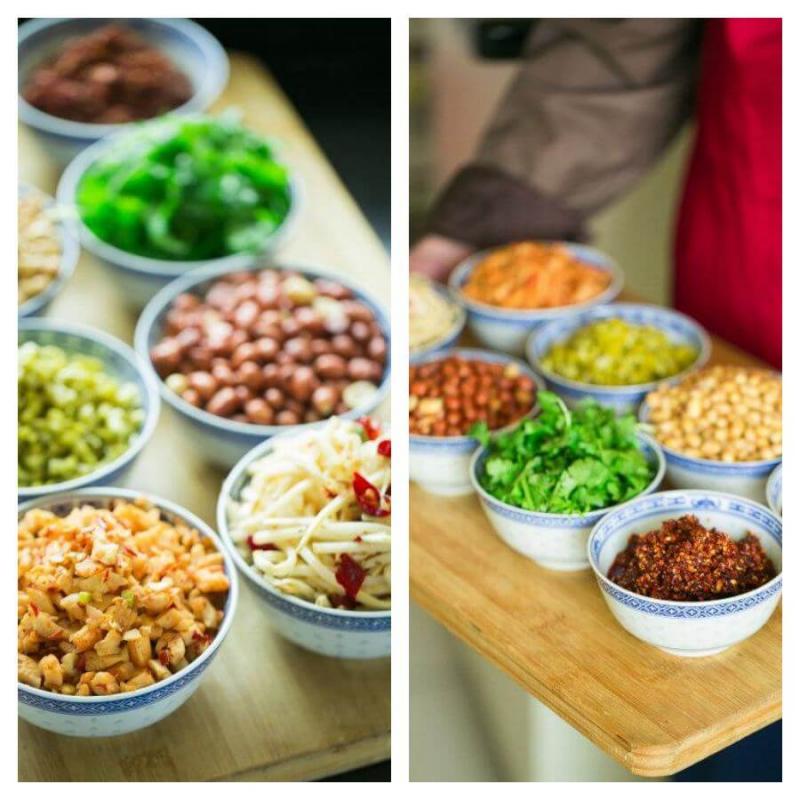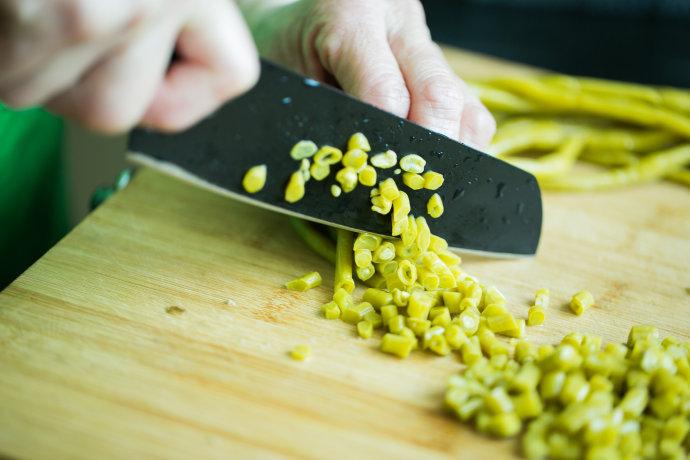Guilin Rice Noodle: the Most Popular Local Dish
What food is Guilin known for?
Guilin a treasure trove of diverse flavors and unique dishes, each offering a glimpse into the cultural tapestry of this enticing city. One such gem is the Guilin rice noodle, a dish that not only tantalizes taste buds but also tells a captivating story of history and tradition.
So what is Guilin rice noodle (mifen)? What are the ingredients of this dish? You may have many questions and can find all the anwers here. We’ll trace its historical roots, and even learn how to Guilin rice noodles perfectly in the comfort of your own kitchen.

What is Guilin Rice Noodle?
Guilin Rice Noodle: These three words evoke a sense of anticipation and mouthwatering delight. But what exactly is Guilin rice noodle? At its core, Guilin rice noodle is one of quintessential Chinese dishes that hails from the picturesque city of Guilin, located in the Guangxi Zhuang Autonomous Region of China. >> Also discover 8 Famous Noodles to Try in China
Ingredients that Make the Magic
Guilin rice noodle is a symphony of ingredients that come together to create a harmonious and flavorsome dish. The star of the show, of course, is the mifen (rice noodle) itself. These delicate, ribbon-like strands of rice flour are not just a canvas for the toppings, but a key player in the overall experience.
Guilin rice noodle sauce, consisting of a few dozen Chinese herbs and spices, takes up to 8 hours sitting on the fire. Fire needs to be controlled carefully and constant stirring the sauce is necessary. It is like making a good soup in Cantonese cuisine, though a bit longer. Each Guilin rice noodle shop has its own recipe of the sauce, a top secret of the business.

Toppings are where the Guilin rice noodle truly shines. The meat, especially the deep fried pork slices (Guoshao in Chinese), is another secret mastered by only a few in the city of Guilin. It is a time consuming work with tricks. Chunks of pork meat, together with the skin, is boiled first, and then put to a wok full of boiling vegetable oil for deep frying. The frying process is repeated a few times until the skin produces a golden color. It is then put aside for the day’s selling. A good Guoshao has both lean meat and fat, around 30% lean meat and 70% fat. Good Guoshao’s fat melts the moment it is placed in the mouth and the lean meat is tender and tasty.
Crunchy peanuts and preserved vegetables provide a contrast in texture and a burst of tanginess.
The broth, often made from pork bone or fish, is the heart and soul of Guilin rice noodles. Simmered to perfection, it infuses the dish with a rich and savory flavor that ties all the elements together.
Each bite of Guilin rice noodle is memorable thanks to the symphony of flavors that are created by the combination of the sauce, toppings, broth and other ingredients.
What is the History of Guilin Rice Noodles?
The history of Guilin rice noodles is a journey through time, tracing back its origins to over 2000 years ago. So when did Guilin rice noodles originate and who invented it?
Legend has it that Emperor Qin Shi Huang of Qin Dynasty launched a large army to attack the Baiyue region, the ancient coastal areas of Southern China. To defend against foreign enemies and facilitate transportation, he had to build a canal (today’s Lingqu Canal) in the area north of Guilin. However, most of the Qin soldiers at that time were northerners who grew up eating noodles as their staple food, such as knife-shaved noodles and ramen. In the south, rice was the staple food, and many of the generals had difficulty adapting.
Not being able to eat properly, they didn't have the strength to efficiently build the Lingqu Canal. At this time, Shi Lu, the supervisor of the Imperial Household and the official in charge of building the canal, who came up with a solution.
According to historical records, "Qin Shihuang ordered Shi Lu to transport grain to build the Lingqu Canal, which would enable the army to penetrate deeper into the Baiyue Region." Rumor has it that Shi Lu was a Yue resident who instructed the army's cooks to soak, grind, and steam rice, then add necessary seasonings to create a rice flour similar to noodles that could be supplied to the soldiers.
The Qin soldiers ate the rice noodle and liked it very much, and thus, Guilin rice noodles was created.

Types of Guilin Rice Noodle
Gravy Rice Noodles (卤菜粉) - the most popular
The rice noodles are first scalded, then put into a bowl with sesame oil, marinade, fried peanut rice or soy beans, pickled bean curd or sauerkraut, dried chilli noodles or pickled chilli sauce, chopped spring onion, pot roast (pork), barbecued pork (beef), beef tongue, beef liver, etc. And then the soup is added to the bowl (optional), and the bowl is mixed with the toppings for an excellent taste.
Broth Rice Noodles (汤粉)
It is also known as "Three Fresh Vermicelli". The soup is made of pig intestine, liver and pork, and is very sweet and fresh. To eat, place the rice noodles in a bowl, scoop up a ladleful of the broth mixed with the solid three kinds of fresh meat. Pour it into the bowl, and sprinkle some chopped green onions on it.
Fried Noodles (炒粉)
Stir fry the rice noodles in a frying pan, add condiments, especially marinade, and then add sliced meat and cauliflower. After stir-frying, it is served in a dish, and the rice noodles are shiny and bright, whetting the appetite.
Guilin Horse Meat Rice Noodles (马肉米粉)
To prepare the dish, put the rice noodles in a strainer and then put them to the boiling horse bone soup. Once ready, serve the soup in a bowl with horse meat on top. Sprinkle chopped green onions and coriander on the dish, drizzle it with peanut oil, and add a little chili sauce and minced garlic on top for extra flavor.

How to Make Guilin Rice Noodles: Recipe
Crafting the perfect bowl of Guilin rice noodles requires precision, patience, and a deep understanding of the ingredients. Here's a simplified recipe to get you started:
Ingredients:
Broth:
Instructions:
1. Cook the rice noodles according to the package instructions. Drain and set aside.
2. In a pot, bring the pork bone or fish broth to a simmer. Add ginger, garlic, salt, and white pepper. Allow the flavors to meld for about 20-30 minutes. Strain the broth and keep it warm.
3. Marinate the sliced pork with a pinch of salt and any desired seasonings. Pan-fry or grill the pork until cooked through. Slice into thin strips.
4. Prepare the preserved vegetables, roasted peanuts, fresh herbs, and pickled bamboo shoots.
5. To serve, place a portion of cooked rice noodles in a bowl. Top with sliced pork, preserved vegetables, roasted peanuts, fresh herbs, and pickled bamboo shoots.
6. Ladle the warm broth over the toppings and noodles. If desired, drizzle with a bit of chili oil for extra heat.
7. Give everything a gentle mix, allowing the flavors to meld.
8. Serve your homemade Guilin rice noodles hot and enjoy!
Where to eat Guilin Rice Noodle
Whether you're taking in Guilin's breathtaking landscapes or exploring the bustling streets of the city, one thing you must try is Guilin rice noodle, a true celebration of taste, culture, and the art of China's gastronomy. But where to eat?
Tianyuan Noodle Shop (田源米粉店)
Add: No.1, Sihui Road, Xiufeng District
There are almost always people standing in front of the door shivering noodles, but it's worth the wait. Guilin locals love to come here.
The sauce is slightly sweet and the chilies pack a punch. You can have a bowl of noodles in your hand in just a minute. Try the guoshao, roasted beef and barbecued pork, dried radish with spring onion and chili, and a stick of doughnut.
You Won’t Forget Guiln Rice Noodle (吃不忘桂林米粉店)
Add: No.26 Xinyi Road, Xiufeng District
This Guilin rice noodle shop is open 24 hours a day! No matter what time you arrive, you can enjoy fragrant rice noodles. It's a late-night canteen for Guilin gourmets that has remained unchanged for decades.
The shop has simple tables and chairs, traditional tableware, and no excessive decorations. However, with years of good craftsmanship, it attracts a batch after batch of diners who like to linger here because of the good taste.
Take one of the private China Culinary Tours to discover gourmet Chinese food:
7-day Gourmet Package to China
